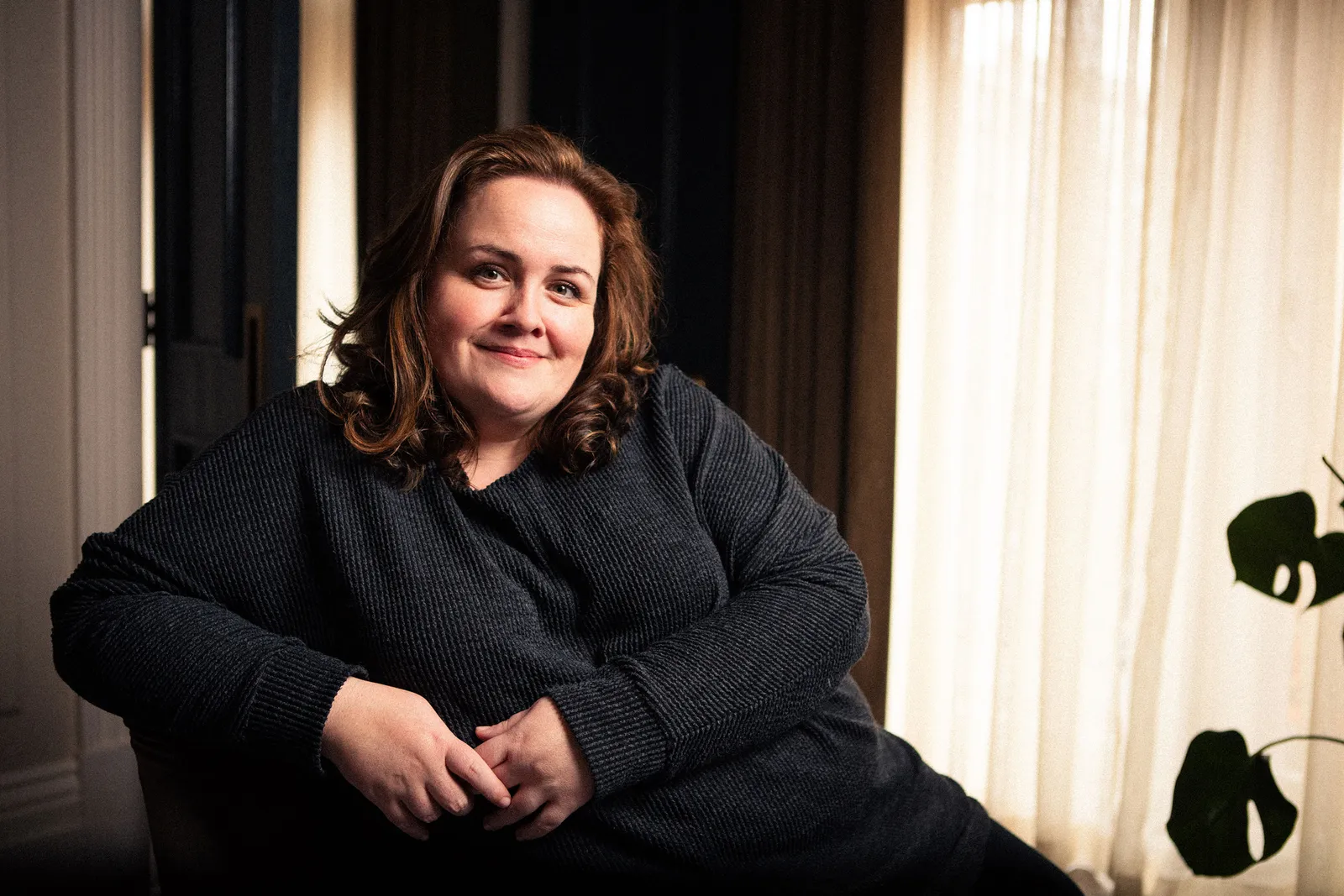When Baby Reindeer dropped on Netflix, audiences were immediately pulled into the deeply personal, harrowing, and at times unsettling world of Richard Gadd’s semi-autobiographical story. But among the raw performances and haunting themes, one character lingered in the minds of viewers more than any other: Martha. Portrayed with chilling nuance by British actress Jessica Gunning, Martha is a complex, often disturbing figure who defies easy categorization.
To Gunning, though, the woman at the heart of this story was never a monster. In fact, she saw her as someone deeply human—flawed, broken, but not beyond empathy. “I just kept thinking that if this part gets into the hands of somebody that sees her as bad or a villain, then it would be a real shame,” Gunning explained in a recent interview with Vanity Fair. “Because I think she’s so much more than that.”
The Line That Said It All
One moment in the script convinced Gunning that she had found a role unlike any other. In one scene, Martha says: “Have you ever just wanted to zip someone open and climb inside them?” It’s a line that could easily be read as creepy or delusional. And in fact, a friend helping Gunning prepare for the audition thought exactly that.
But Gunning saw something else entirely.
“To me, it was one of the most romantic things I’d ever read,” she admitted. “I thought, ‘Isn’t it sweet that she wants to snuggle away inside him?’” That perspective—a mix of tenderness and tragic longing—was what ultimately earned her the part. Where others might have played Martha as a textbook stalker, Gunning saw her as heartbreakingly sincere, albeit trapped in a mental loop she couldn’t escape.
Building a Character From the Inside Out
A Role Won Through Empathy
Gunning’s path to the role wasn’t instantaneous. She auditioned four or five times, pushing through a process that many actors would have found disheartening. But she wasn’t going to give up easily.
“I just felt like I really understood what Richard wanted from the part,” she said. From the moment she met Gadd and director Weronika Tofilska, she felt a “great vibe” in the room. Still, there were doubts—she was younger than the production originally imagined for Martha, and she worried that might hurt her chances.
But she didn’t let that stop her. Gunning went so far as to put on a wig and film a new tape with the help of her friend Nadia Stacey (now an Oscar-winning makeup artist for Poor Things). That dedication paid off.
“They were kind of always championing me,” she said in hindsight. And it’s a good thing they did. Without Gunning, Martha might have become a caricature. Instead, she became one of the most memorably unsettling characters on television this year—precisely because she felt so real.
The Influence of Limerence
To understand Martha’s psychology, Gunning delved into a phenomenon called limerence—a state of infatuation or obsession where the feelings are so intense that they distort reality.
“It’s in everybody, really,” she explained. “Everyone has the potential to do it. You meet someone for the first time and you fill in the gaps that aren’t necessarily there.” Martha, in Gunning’s interpretation, is someone consumed by this fantasy. The man she obsesses over, Donny (played by Gadd), isn’t necessarily the person she sees in her mind. And when reality breaks the illusion, it doesn’t compute.
That’s the emotional engine behind Martha’s increasingly erratic behavior. She’s not simply stalking a man—she’s clinging to a version of him that never really existed outside her own hopes and delusions.
The Laugh That Became a Signature
One of the defining aspects of Martha’s character is her laugh—unexpected, loud, and at times unsettling. For many viewers, it became a sonic symbol of the character’s unhinged persona.
But interestingly, it was an adaptation of Gunning’s own.
“It’s like a heightened version of my laugh,” she said. “Occasionally I’ll see people jolt if I’m at a comedy club.” She wanted the laugh to be noticeable but not cartoonish—big enough to turn heads, but still grounded in reality.
And she nailed it. Martha’s laugh is both endearing and unnerving, adding another layer to a character who is constantly shifting between vulnerability and menace.
From Crocs to Court Cases: Becoming Martha
Costuming That Informed the Performance
Outside of the script and psychological research, Gunning also found her way into the character through the little things—like footwear. Specifically, a pair of Crocs.
“I found these really comfortable Crocs that I would wear quite a lot in the active scenes,” she said. “They felt very sturdy and comfy, but like she’d be able to dash off to a court case at any moment.”
That utilitarian mindset—ready for anything, yet grounded in comfort—fit Martha perfectly. Whether bursting into a bar or ranting on the street, she was always prepared, in her own chaotic way, to spring into action.
Improvising in Episode One
Gunning also had the chance to stretch her improv muscles, particularly during the frantic sequence in episode one, where Martha makes several dramatic entrances.
“We were ad-libbing under the voiceover,” she revealed. “That helps you find the character a little bit.” These moments gave her space to experiment, infusing the performance with spontaneity and emotional unpredictability.
After the Breakout: What Comes Next?
Offers, Odd Roles, and Emmy Recognition
After Baby Reindeer exploded in popularity, many assumed Gunning would be flooded with offers. But reality has been a bit more…quirky.
“There haven’t been many offers,” she admitted with a laugh. “There’s been a few funny things that have come in: a touring production of Peter Pan to play the part of Smee.”
It’s a reminder that breakout roles don’t always immediately translate into fame and fortune. But Gunning isn’t discouraged. She’s already achieved something that few actors get to experience: a once-in-a-lifetime role that resonated with millions and earned critical acclaim—including her first Emmy nomination.
“If I don’t work again, I honestly am very proud and lucky to have had a chance to play a character like this,” she said.
The Long Road to Martha: A 17-Year Career
Avoiding the Industry’s Boxes
Gunning has been in the business for 17 years, working steadily across British TV and film. From Doctor Who to The Outlaws and the BAFTA-nominated Pride, she’s built a career on versatility.
But that path hasn’t been without its challenges. “Hollywood has a tendency to put people in boxes,” she said. And for Gunning, being a plus-sized actress added another layer of complexity. Too often, she found herself offered roles where her size was the defining characteristic.
“I’ve tried to avoid parts that are solely to do with being big,” she said. But Baby Reindeer was different. “In the description of Martha as a character, her size is never mentioned.” That detail—or lack thereof—mattered.
It allowed her to play a person, not a type. And that’s been the goal all along.
A Career of Balance
Gunning credits her long-term agent for helping her maintain a career that’s included both comedy and drama. “There’s definitely a version of my career that could have gone solely down the comedy route,” she reflected. “But I was lucky enough that the dramatic parts would come along as well.”
That range is exactly what made her such a perfect fit for Martha. The character required both a comedic edge and the ability to access deep reservoirs of pain, loneliness, and instability.
“Martha is kind of a little bit of everything,” she said. “And that’s life, isn’t it? Life’s a little bit of everything.”
Why Martha Resonates—and Haunts
Baby Reindeer tells a deeply personal story of trauma, obsession, and recovery. Gadd’s decision to include his experience of being sexually abused by a mentor added emotional depth and devastating context to the narrative. But it’s the depiction of Martha that arguably elevates the series beyond its plot.
Gunning’s performance reminds us that villains are often more complicated than they seem. Martha is by no means excused for her actions. But she is understood. And in understanding her, we come closer to understanding ourselves—the parts of us that want to be loved, to matter, to feel less alone.
In a world that often craves simplicity, Jessica Gunning gave us something far more valuable: a character who is maddening, terrifying, heartbreaking, and—somehow—still achingly human.
- Bonnie Blue secretly filming huge C4 show which will reveal ‘what her life’s really like’ after 1,000 men sex stunt - June 5, 2025
- When is Mother’s Day 2025 in the UK? Origins and global celebration dates - June 5, 2025
- Who is Dave Blunts? The ghostwriter rapper behind Kanye West’s new album - June 5, 2025







